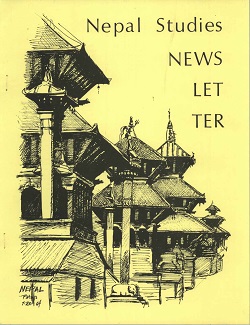Author Biography
Bal Gopal Shrestha is a researcher at the University of Oxford, UK. An Affiliated Fellow at the International Institute for Asian Studies, Leiden, the Netherlands, Shrestha obtained his PhD in anthropology from the University of Leiden in 2002. From 2006-2007, he taught politics of South and Southeast Asia at the University of Leiden. He has conducted fieldwork in Nepal, India, the UK, and Belgium. He has published widely on Nepalese religious rituals, Hinduism, Buddhism, ethnic nationalism, the Maoist movement, political development in Nepal, and the Nepalese diaspora. He is the author of the monographs: The Newars of Sikkim: Reinventing Language, Culture, and Identity in the Diaspora (Vajra Books 2015), The Sacred Town of Sankhu: The Anthropology of Newar Rituals, Religion and Society in Nepal (Cambridge Scholars Publishing 2012, paperback 2013).
Abstract
This paper presents the importance of Nepal Samvat in Nepalese cultural life and compares it with Vikram Samvat, the official calendar of Nepal. Presenting a discussion on eras prevalent in Nepal, this paper examines the significance of the Nepal Government’s recent recognition of Nepal Samvat as the national calendar of Nepal. It presents a historical and cultural overview of the different eras and calendars that are in use in Nepal. It attempts to demonstrate a continuous historical legitimacy of Nepal Samvat, in contrast with Vikram Samvat, which is shown to be a fairly recent imposition associated with the Rana period, from 1903 onward. This article argues against any claims that the implementation of Nepal Samvat as an official calendar is impractical. In addition, I address the following issues: (1) how to adapt a lunar calendar to practical use, (2) how to coordinate it with governmental and business interests, and (3) how to coordinate it with external calendars (e.g. the Common Era or ‘Christian’ calendar).
Acknowledgements
The author is indebted to the late Kesar Lall Shrestha, Dayaratna Shakya, Swoyambhudhar Tuladhar, Amu Shrestha, Aju Shrestha, Sanyukta Shrestha, Srilaxmi Shrestha, David N. Gellner, Keshav Lall Maharjan, Kamal P. Malla, Manik Lall Shrestha and Nirmal Man Tuladhar for their valuable comments to earlier drafts of the present text. He is grateful to the editors of HIMALAYA as well as two anonymous peer reviewers for their helpful observations and critical remarks. Thanks are due to P. Richardus for carefully copy editing.
Creative Commons License

This work is licensed under a Creative Commons Attribution 4.0 License.
Recommended Citation
Shrestha, Bal G.. 2015. To Use or Not to Use: Nepal Samvat, the National Era of Nepal. HIMALAYA 35(1).
Available at:
https://digitalcommons.macalester.edu/himalaya/vol35/iss1/14


